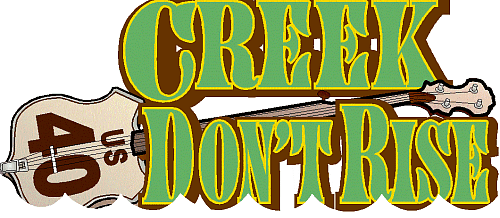 | ||||||||||||||||||||||||||||||||||||||||||||||||||||||||||||||||||||||

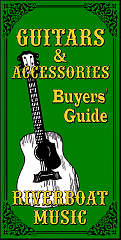
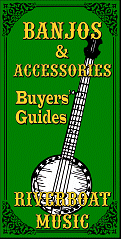
|
Minstrel BanjosAs mentioned in my article on The Evolution of the Banjo, the earliest banjos in North America were based on African gourd instruments, but received updates like drum-shaped bodies and fingerboards about the same time they came to the attention of white musicians. I started writing more specifically about early banjos when it came to my attention that many late 1800s banjos were being advertised as "Civil War" era. Sadly, those ads were taking in some readers who thought they were buying a rare piece of history, when really all they were buying were mass-produced factory banjos from decades later (and there are still quite a few of those around).So the Civil War Banjos article focused on the kinds of banjos that figured most prominently in Civil War history. Most of the banjos photographed or documented before 1865 were based on designs created decades earlier and popularized by early "minstrel" shows, in which white musicians would wear blackface and promote harmful stereotypes of enslaved peoples. Not a shining moment in American history.
As the banjo grew in popularity, it tended to retain the style prefered by Sweeney and his contemporaries. The photo below is a Boucher, which was one of the most popular banjo manufacturers before the Civil War. Based largely on the kind of banjo Sweeny preferred, this banjo's features include scalloping under the fifth string, a scoop near the body for strumming, and a sideways scroll. 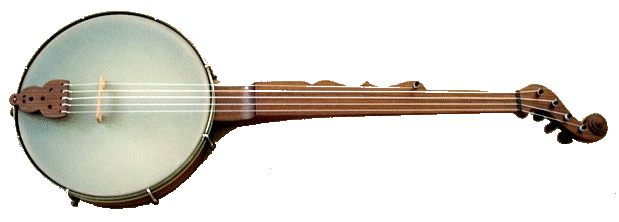
By the way, I've been told that the scalloping on these banjos shows the location of what would later become the seventh and octave fret. Many of the cheaper banjos neglect these features, but if you have the chance to examine them, you'll see that they are also lacking frets, have fewer than 12 brackets, and the tuning head is a straight extension of the fretboard.  Often, the home-made banjos of this era - and possibly some of the factory instruments - had tacks instead of brackets for tightening the skin head. Just a few, though. If the skin head got "sloppy" due to high humidity, you would hold it over a candle briefly to dry the skin out and tighten it up again. Yes, this was a delicate operation. One Civil War veteran reported holding the banjo over the campfire briefly to tighten the head. No jokes, please. Early Minstrel Banjo RimsTerry Bell, who has a reputation for making very authentic reproductions of early banjos, informs me that the early minstrel banjo rim is thinner than later banjos. According to Terry:
Apparently the end result is a richer low midrange that you don't get with thick rims or shoes bolted to the side of the rim. Visually, no one will notice the difference, and no one but banjo players will really hear the difference unless they have a chance to A/B two similar instruments side by side. But Terry's fans say there is a difference. This Side of the Civil WarYou can find more information on pre-Civil War and Civil-War Era banjos in the Civil War Banjos article. However, I do need to add that the minstrel shows kept going after the Civil War, although with constantly diminishing popularity. A few troupes perormed as late as the 1890s, and at least three persisted beyond 1900. However, by 1870, the vast majority of banjos were played in homes. By 1890 ministrel shows probably accounted for less than one out of 100,000 banjos being purchased or played. For example, the Classic Banjo movement brought the banjo into respectable parlors all over the country, with high-quality fretted instruments and custom arrangements. Banjo orchestras emerged, often as an outgrowth of social clubs, schools, or workplace socialization. By 1890, the ratio of banjos in private hands versus minstrel troupes was probably something like 10,000 to 1. In the meantime, commercial banjo manufacturing was introducing many improvements that had nothing to do with minstrelsy at all. "Improvements" that were added to the banjo by 1890 (some of which were not retained) include:
The early-1890s S.S. Stewart banjo shown below had all of these improvements. Their better banjos had up to 30 brackets, many fancy inlays and - presumably - better materials and craftsmanship. But these features establish pretty much a "minimum" baseline for all banjos made since 1900.  It is pretty certain that post-Civil War minstrel shows used banjos that had most or all of those improvements. So technically, a tiny minority of such instruments were "minstrel banjos." But that's not why they were made or how most of them were used. By the way, the metal wrap around the outside of the pot was eventually discontinued - the last examples I've seen probably didn't date much past 1920. This isn't to be confused with all-metal pots, which seem to be a way to produce student banjos cheaply in the early 1900s. Banjos That are Definitely "Non-Minstrel"That said, by the time resonators and tone rings appeared in the early 20th century, banjos were being used for jazz more than anything else. The era of the minstrel show's popularity was long gone. So anyone selling even a very old banjo with a resonator or tone ring as a "minstrel" banjo is "pulling your leg."That said, I've see banjos so equipped being advertised as "minstrel" or "Civil War era" by dumb-like-a-fox eBay sellers. What Does the Term "Minstrel Banjo" Mean Today?As I mentioned earlier, the decline of minstrel shows overlapped the rise of massive commercial banjo manufacturing by several decades. However, the overwhelming majority of banjos made after the Civil war were made for home and "banjo orchestra" use, not for minstrel shows. So calling an 1870-1890 banjo a "minstrel banjo" is "stretching it," unless you have hard evidence that a specific post-1965 banjo was so used.Today the phrase "minstrel banjo" typically identifies a banjo with:
In other words, it should look a lot more like the two photos at the top of the page than the S.S. Stewart phowo further down. ConclusionThough it is largely redundant with the Civil War Banjos article, I added this article to my site so I could spell out the circumstances in which a post-Civil War banjo could legitimately be described as a minstrel banjo - and why banjo owners and sellers should be hesitant to apply that moniker to any banjo with frets and other common post-Civil War improvements. That said, some of the content above is based on other "experts'" assertions, and either they or I may have missed something. If you have evidence that any of this article's content is wrong or overlooks important facts, please let me know. I will GLADLY update this article (trust me, I've updated hundreds of others). Reader feedback is the reason I started this project in the first place. And I wouldn't be surprised if I find myself going back to change details as old, but buried facts come to light. On the other hand, I've already received my share of comments like "Great-Uncle Fezziwig always told me such-and-such, so you're wrong." As much as I may admire your Great-Uncle Fezziwig personally, back when I was editing history books for a living, I used to fact-check my fact-checkers, so I have an unpopular habit of distinguishing unsupported assertions from facts. In the meantime, I love getting questions and interacting with fellow musicians of all stripes. So please stay in touch. The Contact page has further information on ways to do that. Other Articles about the Banjo
And please stay in touch!
All material, illustrations, and content of this web site is copyrighted ? 2001, 2002, 2003, 2004, 2005, 2006,
For questions, comments, suggestions, trouble reports, etc. about this page or this site, please contact us.
|
|||||||||||||||||||||||||||||||||||||||||||||||||||||||||||||||||||||


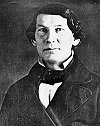 One of the pioneers of "minstrel" entertainment, Joel Walker Sweeney, also spent much of his time behind the scenes promoting the banjo to other white musicians. By the time the Civil War started, many people in the North and South had banjos in their homes and played them simply because they liked the music they produced.
One of the pioneers of "minstrel" entertainment, Joel Walker Sweeney, also spent much of his time behind the scenes promoting the banjo to other white musicians. By the time the Civil War started, many people in the North and South had banjos in their homes and played them simply because they liked the music they produced.






































